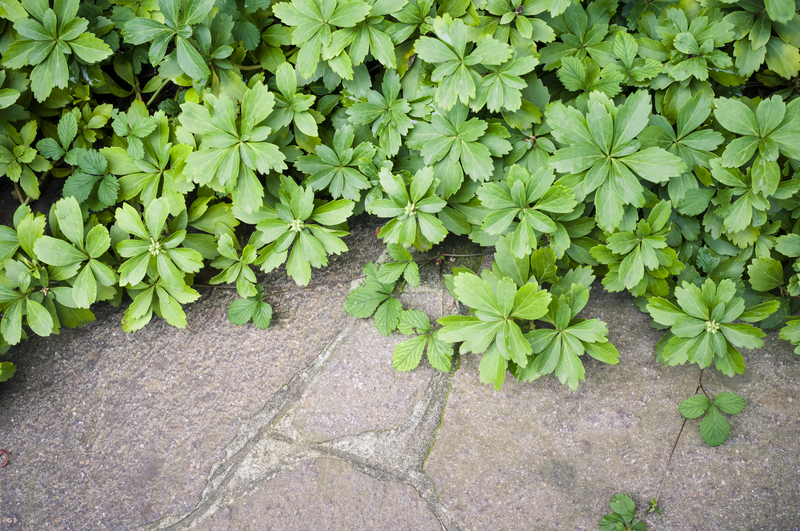Mitigating the Impact of Severe Weather on Your Garden
Posted on 29/05/2025
Mitigating the Impact of Severe Weather on Your Garden
The unpredictable nature of the weather can have significant effects on gardens, from scorching heatwaves and torrential rains to fierce winds and unexpected frost. If you're passionate about gardening, learning how to mitigate the impact of severe weather on your garden is essential. This comprehensive guide explores effective strategies, best practices, and actionable tips to protect your beloved plants and sustain the health and beauty of your outdoor space year-round.

Understanding Severe Weather Risks in Gardening
Severe weather events can occur in any season and at any location. For gardeners, these extreme conditions bring numerous challenges, including:
- Heavy rainfall and flooding - which can damage root systems and erode soil.
- High winds - causing physical breakage of stems and branches.
- Frost and hail - potentially killing tender plants and seedlings.
- Drought and heatwaves - leading to excessive plant dehydration and sunburn.
Proactive planning and thoughtful garden management are crucial to mitigating severe weather impact and ensuring your garden not only survives but thrives despite these challenges.
Identify Local Weather Patterns
Begin with a clear understanding of your region's climate and typical weather extremes. Investigate:
- Average rainfall and drought periods during the year
- Temperature fluctuations, particularly risks of frost and heat
- Frequency and strength of winds
- Incidence of hail or sudden storms
Consult local weather agencies or agricultural extensions for historical data and forecasts specific to your microclimate. Armed with this knowledge, you can implement tailored solutions for severe weather garden protection.
Prevention and Preparation: Strengthening Garden Resilience
1. Soil Management for Weather Resistance
Healthy, well-structured soil acts as your garden's first line of defense against the elements. Some strategies include:
- Adding organic matter: Compost and well-rotted manure improve soil structure, enhance water retention during dry spells, and aid drainage during heavy rains.
- Mulching: A thick layer of mulch (bark chips, straw, or leaves) insulates roots against both heat and cold, suppresses weeds, prevents soil compaction, and reduces erosion from rain.
- Soil testing: Regular tests allow you to adjust pH and nutrients, keeping plants robust and adaptable to variable weather.
2. Choose Weather-Resistant Plants
When planning a weatherproof garden, plant selection is crucial. Choose plants:
- Native to your region, as these are adapted to local weather extremes
- With deep or fibrous root systems, for stability and water efficiency
- That are drought-tolerant or frost-resistant according to your most common threats
- With waxy or thick leaves, which help lessen water loss and offer wind resistance
Mix plant varieties to avoid losing everything to a single type of severe weather. Converted lawns to prairie or meadow-style planting can create resilience, as the biodiversity cushions against loss.
3. Garden Design Against Severe Weather
Smart garden design helps reduce weather risks substantially. Consider these tactics:
- Windbreaks: Hedges, strategically placed trees, or solid fencing shelter delicate plants from damaging gusts.
- Raised beds: Promote drainage, protect roots from excess wetness, and make frost covers easier to apply.
- Contouring: Shaping land to direct excess water away from roots or structures, and prevent soil erosion.
- Creating microclimates: Group sensitive plants near heat-retaining walls or sheltered spots for extra protection.
Protective Measures for Extreme Weather Events
1. Shielding from High Winds
Severe wind can snap stems, strip leaves, and uproot young transplants. How to protect your garden:
- Install windbreaks: Dense evergreen hedges, slatted slat fencing, or even rows of sunflowers reduce wind speed and shelter delicate areas.
- Support vulnerable plants: Use stakes, cages, or trellises for tall annuals and vegetables.
- Position containers carefully: Cluster pots in wind-sheltered corners or group them for mutual protection.
2. Mitigating Flood and Heavy Rain Impact
Excess rainfall and flash floods can suffocate plants and wash away valuable topsoil. Strategies include:
- Ensure good drainage by incorporating sand or grit into beds and using raised beds where possible.
- Use mulch to prevent soil erosion and surface runoff.
- Plant rain gardens - these areas of water-tolerant grasses and flowers absorb runoff water and protect other sections from flooding.
- Regularly clean out drains and gutters that serve your garden area to promote efficient water flow.
3. Protecting Against Frost, Snow, and Hail
Late spring or early autumn frost can devastate delicate blooms or ripening vegetables, while hail can destroy foliage in minutes. Protection techniques:
- Frost cloths and row covers: Lightweight, breathable fabrics trap ground heat overnight, guarding plants from sudden chills.
- Cloche or cold frames: Dome-shaped covers made of glass or plastic can safeguard small plants or seedlings from frost and hail.
- For established trees or shrubs, wrap branches in burlap or horticultural fleece during cold snaps.
- Install shade netting or temporary screens to break the force of hail.
4. Heatwaves and Drought Prevention
High temperatures and prolonged dry spells are increasingly common:
- Water deep, not often: Soak the soil at root level once or twice a week instead of daily surface watering. This encourages deep root growth, making plants more resilient.
- Mulch heavily: Organic mulch conserves soil moisture and protects root systems from extreme temperature fluctuations.
- Shade cloths: For vulnerable crops, such as lettuce or young transplants, temporary shade netting can prevent sun scald and overheating.
- Use self-watering systems or drip irrigation to maintain consistent soil moisture.
Best Practices for Garden Recovery After Severe Weather
1. Immediate Damage Assessment
Once severe weather passes, inspect your garden carefully:
- Prune or remove broken branches and clear away debris to prevent disease spread.
- Check the soil for compaction or waterlogging and gently aerate as needed.
- Examine for signs of rot, pest invasion, or fungal disease, which often follow extreme conditions.
2. Rehabilitation and Replanting
Don't rush to replace all damaged plants immediately. Many will bounce back with care:
- Trim dead or damaged foliage but leave as much healthy tissue as possible for natural recovery.
- Top-dress with compost or balanced fertilizer to stimulate regrowth.
- For bare or heavily eroded patches, sow fast-growing ground covers or annuals to stabilize soil and restore microbiome health.
3. Monitor and Adjust Care Routines
Weather-damaged gardens often need extra TLC:
- Reduce watering if rainfall has saturated the beds, but don't let plants dry out in sudden sunshine after a storm.
- Apply organic pest deterrents where plants are vulnerable and damaged.
- Continue mulching and soil improvement to aid long-term recovery.
Sustainable Approaches: Prepare for the Future of Extreme Weather Gardening
1. Building Biodiversity for Resilience
Diversity in your plant selection and garden structure increases your odds of withstanding whatever nature delivers. Try to include:
- A mix of natives, perennials, trees, and ground covers
- Pollinator-friendly plants to support bees and beneficial insects
- Vegetable and flower varieties with varied maturation times, so not everything is at risk at once
Biodiverse gardens adapt more quickly to stress, recover faster, and often require less intensive intervention after severe weather.
2. Water Management and Conservation
- Install rainwater collection systems to make use of intense downpours and buffer dry periods.
- Apply water only at the root zone using drip lines or soaker hoses for maximum efficiency.
- Consider permaculture techniques such as swales, berms, and rain gardens to naturally redirect and conserve water.
3. Smart Technology and Forecast Monitoring
- Use weather apps and local forecasts to anticipate and respond to approaching threats, enabling rapid protection measures.
- Install automated irrigation and soil moisture sensors for efficient watering during unpredictable periods.
- Attach temperature and wind alarms to greenhouses or coldframes to trigger protective actions.

Frequently Asked Questions About Mitigating Severe Weather in Gardens
What is the best mulch for severe weather protection?
Organic mulches such as bark shards, straw, or leaf litter offer excellent insulation against heat, cold, and water loss. In areas prone to high winds, consider heavier materials like gravel to prevent mulch displacement.
How can I quickly protect plants before a sudden severe storm?
Keep a supply of row covers, frost cloths, or even old sheets handy. Lightweight frames or makeshift shelters can also be pressed into service to shield valuable vegetables or ornamentals at short notice.
Are there specific plants that withstand severe weather better?
Absolutely. In drought-prone zones, look for lavender, rosemary, sedum, and grasses. For cold and wind, try conifers, hellebores, and hardy perennials. Consult a local nursery for the best resilient plant choices for your climate.
Conclusion: Garden Protection in the Era of Extreme Weather
Gardening under the challenge of severe weather requires anticipation, flexibility, and a commitment to sustainable practice. By understanding your risks, preparing your soil, selecting resilient plants, and using practical protective measures, you can significantly reduce the impact of harsh conditions and keep your garden flourishing.
Remember, the key to mitigating the impact of severe weather on your garden lies not just in weathering the storm, but in building a landscape that adapts, resists, and rebounds - ensuring beauty and productivity for years to come.
With the right techniques and a little forward planning, your garden can withstand whatever surprises the climate has in store!

